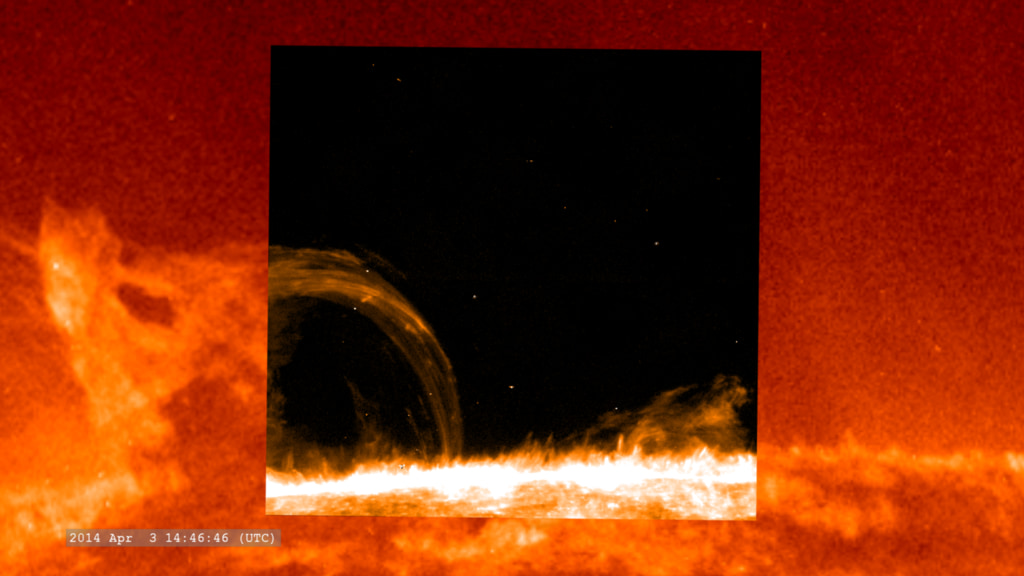NASA’s IRIS spots Nanojets: Shining light on heating the solar corona
In pursuit of understanding why the Sun's atmosphere is so much hotter than the surface, and to help differentiate between a host of theories about what causes this heating, researchers turn to NASA's Interface Region Imaging Spectrograph (IRIS) mission. IRIS was finely tuned with a high-resolution imager to zoom in on specific hard-to-see events on the Sun.
A paper published in Nature on Sept. 21, 2020, reports on the first ever clear images of nanojets — bright, thin lights that travel perpendicular to magnetic structures in the solar atmosphere called the corona — in a process that reveals the existence of one of the potential coronal heating candidates: nanoflares.
Watch this video on the NASA.gov Video YouTube channel.
Credit: NASA's Goddard Space Flight Center/Scientific Visualization Studio

Credits
Please give credit for this item to:
NASA's Goddard Space Flight Center
-
Scientist
- Patrick Antolin (Northumbria University)
-
Data visualizer
- Tom Bridgman (Global Science and Technology, Inc.)
-
Producer
- Joy Ng (USRA)
-
Writer
- Susannah Darling (ADNET Systems, Inc.)
Missions
This page is related to the following missions:Release date
This page was originally published on Monday, September 21, 2020.
This page was last updated on Wednesday, May 3, 2023 at 1:44 PM EDT.
